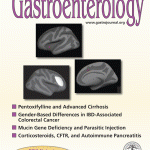 Many Nutritional Therapists are becoming aware that the incidence of Coeliac Disease (CD) is increasing in frequency, but by what sort of levels?
Many Nutritional Therapists are becoming aware that the incidence of Coeliac Disease (CD) is increasing in frequency, but by what sort of levels?
To answer this question a comparison was undertaken over a 50 year period. The study group looked at the incidence of undiagnosed CD and its likely hood of future health complications.[1]
A previous study in 2005 had noted that Children identified with CD, but never put on a gluten-free diet, as adults have a significantly higher percentage of auto-immune disorders, higher BMI, osteoporosis, dental enamel defects, alcohol intake, cigarette smoking, sexual habits and lower neo-natal weight in their children with subsequent shorter breast-feeding time.[2]
The finding allows the hypothesis that even a short period of GFD in childhood exerts a sort of protective effect from gluten induced diseases.
The implications are that if the incidence of CD is increasing then the presentation of patients with often complex multifactoral symptoms may in fact be reflecting a growing reactivity to gluten and an increased immune related disease pattern.
The 2009 study included 9,133 healthy young adults from a USA Air Force Base (sera were collected between 1948 and 1954) and 12,768 gender-matched subjects from 2 recent cohorts from Olmsted County, Minnesota, with either similar years of birth (n = 5558) or age at sampling (n = 7210) to that of the Air Force cohort.
Samples using sera were tested for tissue transglutaminase and, if abnormal, for endomysial antibodies. Survival was measured during a follow-up period of 45 years in the Air Force cohort. The prevalence of undiagnosed CD between the Air Force cohort and recent cohorts was compared.
Results
Of 9,133 persons from the Air Force cohort, only 14 (0.2%) had undiagnosed CD. In this cohort, during 45 years of follow-up, all-cause mortality was greater in persons with undiagnosed CD than among those who were seronegative (hazard ratio = 3.9; 95% confidence interval, 2.0-7.5; P < .001).
Undiagnosed CD was found in 68 (0.9%) of the Olmsted group with similar age at sampling and 46 (0.8%) persons with similar years of birth.
The rate of undiagnosed CD was 4.5-fold and 4-fold greater in the recent cohorts, respectively, than in the Air Force cohort (both P < or = .0001).
Conclusions
During 45 years of follow-up, undiagnosed CD was associated with a nearly 4-fold increased risk of death. The prevalence of undiagnosed CD seems to have increased dramatically in the United States during the past 50 years.
This 400% increase in incidence of undiagnosed CD is a dramatic growth and strongly suggests that other nations including the UK who follow a similar dietary intake and lifestyle patterns to those of the United States may also have had similar increases. Coeliac disease is now known to be a common condition that affects approximately 1 in every 100 people in the UK. Women are two to three times more likely to develop coeliac disease than men.[3]
Are you considering this diagnosis in your patients and do you know the best test to determine their diagnosis? The current opinion is that IgA antitissue transglutaminase antibodies and IgA antiendomysial antibodies have high sensitivity and specificity for diagnosing coeliac disease, as described in a former post.
References
[1] Rubio-Tapia A, Kyle RA, Kaplan EL, Johnson DR, Page W, Erdtmann F, Brantner TL, Kim WR, Phelps TK, Lahr BD, Zinsmeister AR, Melton LJ 3rd, Murray JA. Increased prevalence and mortality in undiagnosed celiac disease. Gastroenterology. 2009 Jul;137(1):88-93. Epub 2009 Apr 10. View Abstract
[2] Ciacci C, Iovino P, Amoruso D, Siniscalchi M, Tortora R, Di Gilio A, Fusco M, Mazzacca G. Grown-up coeliac children: the effects of only a few years on a gluten-free diet in childhood. Aliment Pharmacol Ther. 2005 Feb 15;21(4):421-9. View Full Paper
[3] West J, Logan RF, Hill PG, Lloyd A, Lewis S, Hubbard R, Reader R, Holmes GK, Khaw KT. Seroprevalence, correlates, and characteristics of undetected coeliac disease in England. Gut. 2003 Jul;52(7):960-5. View Full Paper





